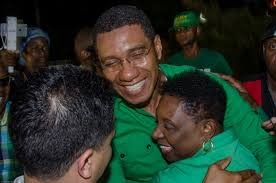 IC Insider predicted the election outcome in the last general election in Trinidad and Tobago and this week’s Thursday election in Jamaica. In our posting on February 21, the report stated that an analysis of poll numbers since 2014 and the number of eligible voters suggest that Thursday’s general elections in Jamaica could result in a shocker and a major shift in parliament. For the People National Party to win the 2016 elections will require voter turn out to be more than 50 percent.
IC Insider predicted the election outcome in the last general election in Trinidad and Tobago and this week’s Thursday election in Jamaica. In our posting on February 21, the report stated that an analysis of poll numbers since 2014 and the number of eligible voters suggest that Thursday’s general elections in Jamaica could result in a shocker and a major shift in parliament. For the People National Party to win the 2016 elections will require voter turn out to be more than 50 percent.
Jamaica Labour Party polled 436,459 votes or 50.13 percent of the votes cast and the People’s National Party 432,353 votes or 49.66 percent of the total of 870,663 votes just around 2,000 votes more than in 2011. The JLP polled 31,301 more votes than in 2011 while the PNP lost 31,927. Just under 48 percent of the electorate voted. The voter turnout although lower than in 2011 turnout as a percentage of voters list is consist with the level of the population that voted of 32 percent in both elections and better than the participation rate from 1993 to 2007.
IC Insider stated in the article ahead of the elections that “polls done from late 2014 puts the Labour party support consistently at 25 percent except for the temporary decline shown in the Don Anderson polls in January to 23.2 percent when political activity was low keyed. Based on error factors in past polls, the base for the JLP is around 28 percent which is consistent with polls done in 2015 that would give them 510,835 votes. This would be an increase of 105,677 over the 405,000 votes they received in 2011 and well over the 464,280 the PNP got then”.
“It is more difficult to say what the PNP numbers will work out at in the end but it should be at least close to their numbers for the last election. Added to this it is also difficult to see voter turnout of 53 percent in the 2011 being exceeded by much, if at all, which would put the PNP support at 25 percent of the electorate or a few thousand votes less than in 2011”.
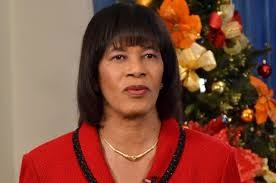 “If the PNP does not increase their support by much, they will be relegated to the back benches of Parliament after Thursday’s polls. As it turned out the PNP based on preliminary results suffered a fall in the number of voters casting the ballot for them while the JLP increased theirs, but both parties failed to motivate persons who said they were going to vote to do so hence a fall in the level of participation”.
“If the PNP does not increase their support by much, they will be relegated to the back benches of Parliament after Thursday’s polls. As it turned out the PNP based on preliminary results suffered a fall in the number of voters casting the ballot for them while the JLP increased theirs, but both parties failed to motivate persons who said they were going to vote to do so hence a fall in the level of participation”.
The results suggest one important factor and seems to explain why the turn out appear low even as the numbers are slightly higher than the tally for the 2011 elections. The elections seemed to have been focused around a third of the seats, maybe even less, some that were marginal and a few others that there was special interest in. Additionally, the infighting over candidates in some of the PNP’s constituencies may have had an overhang effect, thus negatively affecting its support.
Election results validate IC Insider report
PNP needs over 50% turnout to win
 An analysis of poll numbers since 2014 and the number of eligible voters suggest that Thursday’s general elections in Jamaica could result in a shocker and a major shift in parliament. For the People National Party to win the 2016 elections will require voter turn out to be more than 50 percent.
An analysis of poll numbers since 2014 and the number of eligible voters suggest that Thursday’s general elections in Jamaica could result in a shocker and a major shift in parliament. For the People National Party to win the 2016 elections will require voter turn out to be more than 50 percent.
Polls done from late 2014 puts the Labour Party support consistently at 25 percent except for the temporary decline shown in the Don Anderson polls in January to 23.2 percent when political activity was low keyed. Based on error factors in past polls, the base for the JLP is around 28 percent which is consistent with polls done in 2015 that would give them 510,835 votes. This would be an increase of 105,677 over the 405,000 votes they received in 2011 and well over the 464,280 the PNP got then.
The increase for the Labour Party works out at an average of 1,682 votes per constituency and is likely to create a major change in the seat count. It is more difficult to say what the PNP numbers will work out at in the end but it should be at least close to their numbers for the last election. It is difficult to see voter turnout of 53 percent in the 2011 being exceeded by much if at all, which would put the PNP support at 25 percent of the electorate or a few thousand votes less than in 2011.
If the PNP does not increase their support by much, they will be relegated to the back benches of Parliament after Thursday’s polls.
Pollsters terribly wrong on turnout
 The conventional wisdom, according to political pundits, is that a high turnout for elections favours the challengers and a low one, the government, but they don’t really say what is a low turnout? The latest polls show Anderson projecting 58 percent turnout and Johnson 62 percent.
The conventional wisdom, according to political pundits, is that a high turnout for elections favours the challengers and a low one, the government, but they don’t really say what is a low turnout? The latest polls show Anderson projecting 58 percent turnout and Johnson 62 percent.
The big question is that high or low? The answer, it is very high but we are unlikely to see anything that high, but even at 50 percent, it will be the highest number of voters ever with 912,205 or 42,767 more than in 2011, that would mean only 24 percent of the increased numbers on the voters list since 2011 would be voting.
The 2011 election saw the PNP picking up 464,280 votes to the JLP’s 405,158, for the PNP is was 59,000 more than in 2007 while the JLP got 5,000 less than in 2007.
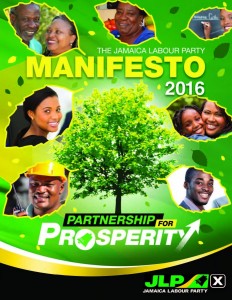 Jamaican pollsters have consistently failed to accurately predict the out turn in Jamaican general elections going back for many elections. No one has done a study as to the reasons. In August 2007 Anderson showed an improbable 82% of the voters saying they would vote. Bill Johnson had it at 80 percent. It turned out that 61 percent voted, that is a huge difference. In 2002 Anderson had it at 78 percent, the actual was 59 percent and in 1997 the forecast was 79 percent versus actual of 65 percent. In 2011 the forecast was 78 percent by Anderson and Johnson 74 percent massively off from the actual.
Jamaican pollsters have consistently failed to accurately predict the out turn in Jamaican general elections going back for many elections. No one has done a study as to the reasons. In August 2007 Anderson showed an improbable 82% of the voters saying they would vote. Bill Johnson had it at 80 percent. It turned out that 61 percent voted, that is a huge difference. In 2002 Anderson had it at 78 percent, the actual was 59 percent and in 1997 the forecast was 79 percent versus actual of 65 percent. In 2011 the forecast was 78 percent by Anderson and Johnson 74 percent massively off from the actual.
Jamaican pollsters are not the only ones in the Caribbean to get the turnout wrong but those in Trinidad don’t seem as badly off as in Jamaica.
Trinidadians went to the polls in general elections late 2015 and two set of pollster got the outcome wrong. It appears that the main reason is an over estimation of voter turnout. IC Insider projected that the PNM would have won based on the results of one poll finding and plotting the data against the results of the previous election.
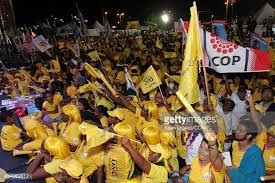 That poll result released on the Sunday ahead of the polls showed a voter turnout of 74 percent, a level that Trinidad and Tobago has not seen since 1961. In the 2010 elections, the turnout was 69.45 percent, 66.03 percent in 2007 and 69.64 percent in 2002, next closet was 1991 with 65.76 percent. IC Insider stated that based on the pattern of recent years it would be surprising if the turnout exceeded 70 percent and that could make a huge difference to the final election results. In the end the turnout fell well below 70 percent, at 66.84.
That poll result released on the Sunday ahead of the polls showed a voter turnout of 74 percent, a level that Trinidad and Tobago has not seen since 1961. In the 2010 elections, the turnout was 69.45 percent, 66.03 percent in 2007 and 69.64 percent in 2002, next closet was 1991 with 65.76 percent. IC Insider stated that based on the pattern of recent years it would be surprising if the turnout exceeded 70 percent and that could make a huge difference to the final election results. In the end the turnout fell well below 70 percent, at 66.84.
Turnout at the last elections in Jamaica, was just over 53 percent, based on history that was low compared with previous elections but was it really that low? A look at the number of persons voting tells a different story. Political pundits say that the 2011 election had a low turnout, and if so favoured the government party but they lost. The fact is that the adage the pundits constantly quote is not based on all the facts. They focus on the level of turnout rather than what the overall numbers are saying. As it the 2011 elections had the highest turnout in the history of the country with 869,438 voters going to the polls, 52,878 more than in 2007 while 2007 had 47,802 more voters than 2002. If the election this week has the same level of turnout as in 2011 it would result in a massive 962,486 voters going to the polls or a massive 93,048 more voters.
If Johnson is right, his poll estimate of 62% would result in 1,131,134 voters or 261,696 more voters exercising their rights to determine the government for the next 5 years, a figure that is more than the increase of the voters list. In the case of Anderson it would result in 1,058,158 votes or 188,720 more votes than in 2011 and would in fact be a huge turnout of voters even as the figures on the surface suggest a relatively low turnout. Even the Johnson polls that showed 55 percent of voters indicating that they will definitely vote would result in a massive voter turnout of nearly 1 million votes.
Election 2016 who will win PNP or JLP?
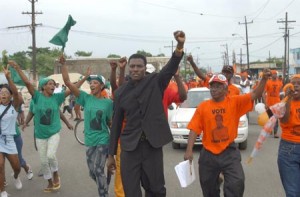 Polling in Jamaica has gone from an exercise that a vast number of Jamaicans found to be incredible, questioning how a small sample of just 1,000 persons could be used to predict pretty accurately, the views of an entire population? Based on the accuracy over the years in forecasting election results, the vast majority, seem to have put their faith in them.
Polling in Jamaica has gone from an exercise that a vast number of Jamaicans found to be incredible, questioning how a small sample of just 1,000 persons could be used to predict pretty accurately, the views of an entire population? Based on the accuracy over the years in forecasting election results, the vast majority, seem to have put their faith in them.
But when it comes to politics emotions run deep and there are mood swings as well. Take the polls since late 2014, the Don Anderson polls showed the following results:
The most recent poll show the PNP at 27.5% and the JLP at 23.2%, effectively the polls show that both parties lost active support since September last year. The PNP lost 2 percentage points and the JLP a much larger 6.4 percentage points, taking the latter below the core position held from 2014 to June of 25%. If the latest polls number were to hold come election day, the PNP would end up with about 54% to 46% for the JLP of the votes, on a head to head race which would put the PNP slightly ahead of the 2011 when they took 53.40% of the votes to the JLP 46.60%.
What is rather interesting is that RJR carried on their website a story of a recent canvass done buy the PNP in which Paul Burke says they are sure to win 32 seats, with 10 of the rest they have in doubt.
“RJR News has obtained a copy of the report which outlines that the Party is sure of winning 32 of the 63 Parliamentary seats. Of the remaining 10 seats from the 42 which were won by the PNP in 2011, two are deemed at risk of being lost and eight have been declared hard to win”. This information does not reflect an outcome as indicated by Anderson polls.
Analysis of the stock market show that it is a good indicator a year out from elections, for the party likely to win, in this case the market is suggesting the PNP. The recent polls are not convincingly showing that.
 History is a useful guide. There is a tendency for polls to pick up incumbency support and less of opposition support. Carl Stone in an article written in 1981 stated that his polls prior to the 1980 election showed the JLP with 56% of the votes which was 3% points lower than the outcome of 59% of the votes cast that the JLP got compared to 41 % PNP. More importantly, a poll done in the summer months showed the polls narrowing from around 54% for the JLP to about 51% with the PNP seeming to have momentum with 49%. The situation between the two polls was fairly similar to late 2015 onwards where activity by one party seemed to have been more low-keyed, than the other.
History is a useful guide. There is a tendency for polls to pick up incumbency support and less of opposition support. Carl Stone in an article written in 1981 stated that his polls prior to the 1980 election showed the JLP with 56% of the votes which was 3% points lower than the outcome of 59% of the votes cast that the JLP got compared to 41 % PNP. More importantly, a poll done in the summer months showed the polls narrowing from around 54% for the JLP to about 51% with the PNP seeming to have momentum with 49%. The situation between the two polls was fairly similar to late 2015 onwards where activity by one party seemed to have been more low-keyed, than the other.
A poll released by Anderson in early Oct 2002 showed the PNP with support amongst 54.4% of voters and the JLP with 45.3% but the outcome was PNP 51.5% and the JLP 46.9% a 5% point bias towards the governing party. In the last polls before the election in 2002 had the PNP at 52.3% to the JLP’s 46.9% still a slight bias towards the PNP but only marginally so. Between June 2007 and late July the poll had an incumbency bias of 4.8 percent to a low of 2.68 percent, the polls prior to the actual election ended with only a 0.30 percent bias in favour of the labour party. In the 2011 elections all Anderson polls from May up to the elections had a bias of 1.7% or less in favour of the JLP who were then in government.
What is also of interest, is that the poll numbers showed that the PNP slipped to 17% in the Anderson polls in December 2014 and has made a major recovery since. The JLP had a low of 15.9 % back in May 2011 and recovered much of the lost ground in polls taken after.
 The 2007 polls make for interesting reading as it is one of the times when a party trailing prior to the election actually end up winning. In February 2007 the PNP trailed the labour party by 1 percentage point at 26% to 27%, in April the PNP pulled ahead with 25% to 23% in May it was 25% each way, by June it showed the PNP with a 4 percentage points lead at 29% to 25%. A second poll in June, showed the PNP moving ahead with 30.70% and the JLP barely keeping up at 25.60%. July saw a change, with the gap closing, but with the PNP ahead with 32.8% and the JLP at 29.3 percent at the end of July the PNP garnered 38.8 percent of voters support and the JLP was at 35.3% and the last one in August placed the PNP at 40.3% and JLP with 41.3%.
The 2007 polls make for interesting reading as it is one of the times when a party trailing prior to the election actually end up winning. In February 2007 the PNP trailed the labour party by 1 percentage point at 26% to 27%, in April the PNP pulled ahead with 25% to 23% in May it was 25% each way, by June it showed the PNP with a 4 percentage points lead at 29% to 25%. A second poll in June, showed the PNP moving ahead with 30.70% and the JLP barely keeping up at 25.60%. July saw a change, with the gap closing, but with the PNP ahead with 32.8% and the JLP at 29.3 percent at the end of July the PNP garnered 38.8 percent of voters support and the JLP was at 35.3% and the last one in August placed the PNP at 40.3% and JLP with 41.3%.
Will the 2016 polls closer to the election date narrow? History seems to support that view but time will tell and by how much. What is also of interest will be the turnout of voters. In the 2011 elections, turnout was 52.76 percent, if that were to happen this time it would result in a total of 93,047 votes over the level in 2011, raising the total to 962,485. If the Anderson’s latest polls numbers are close to accurate, there would only be about 2 percentage more points that either party could pick up based on the above, but the latest voters list is 10.7 percent higher than the 2011 one with an additional 176,374 voters or 20 percent of persons who voted in 2011.






